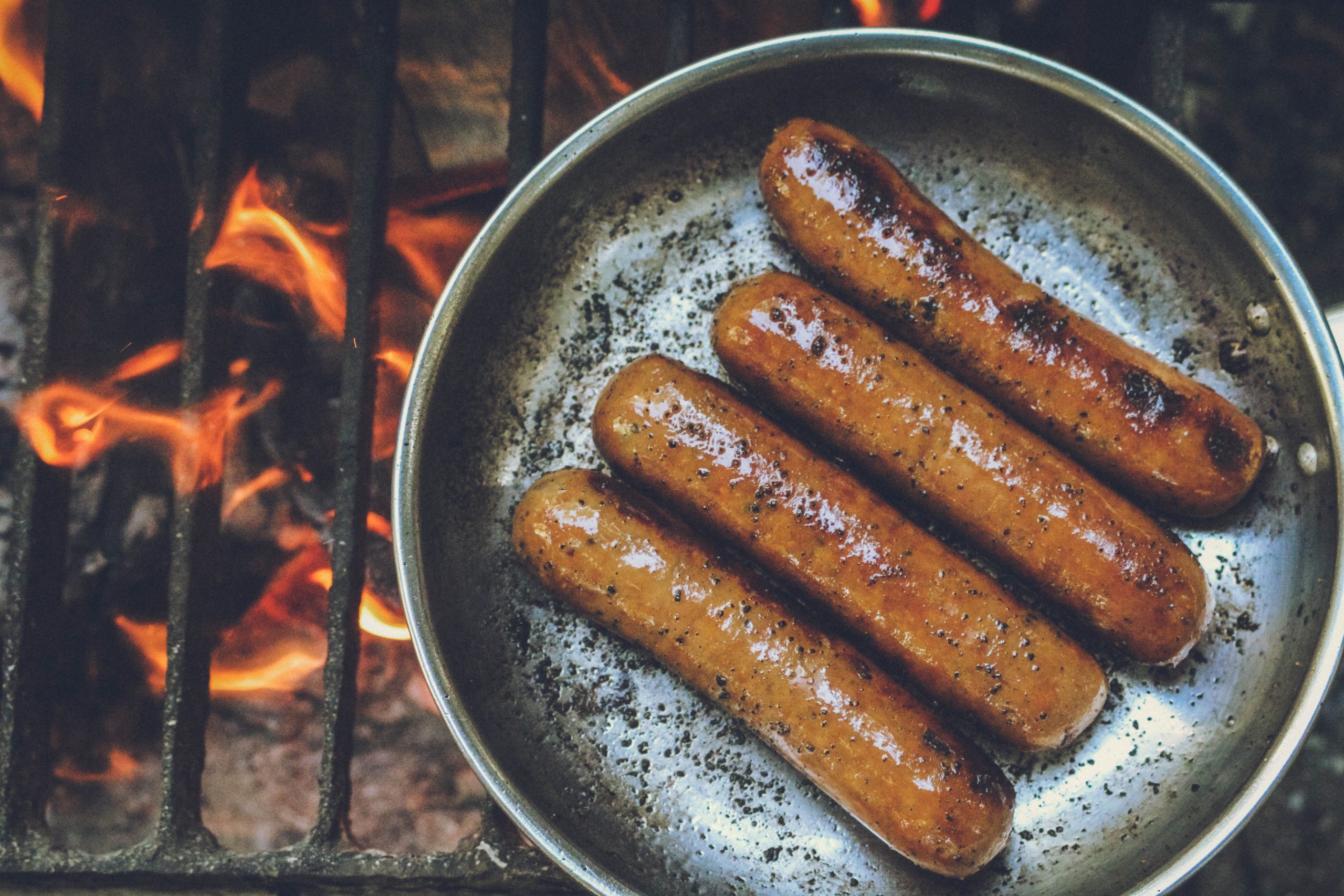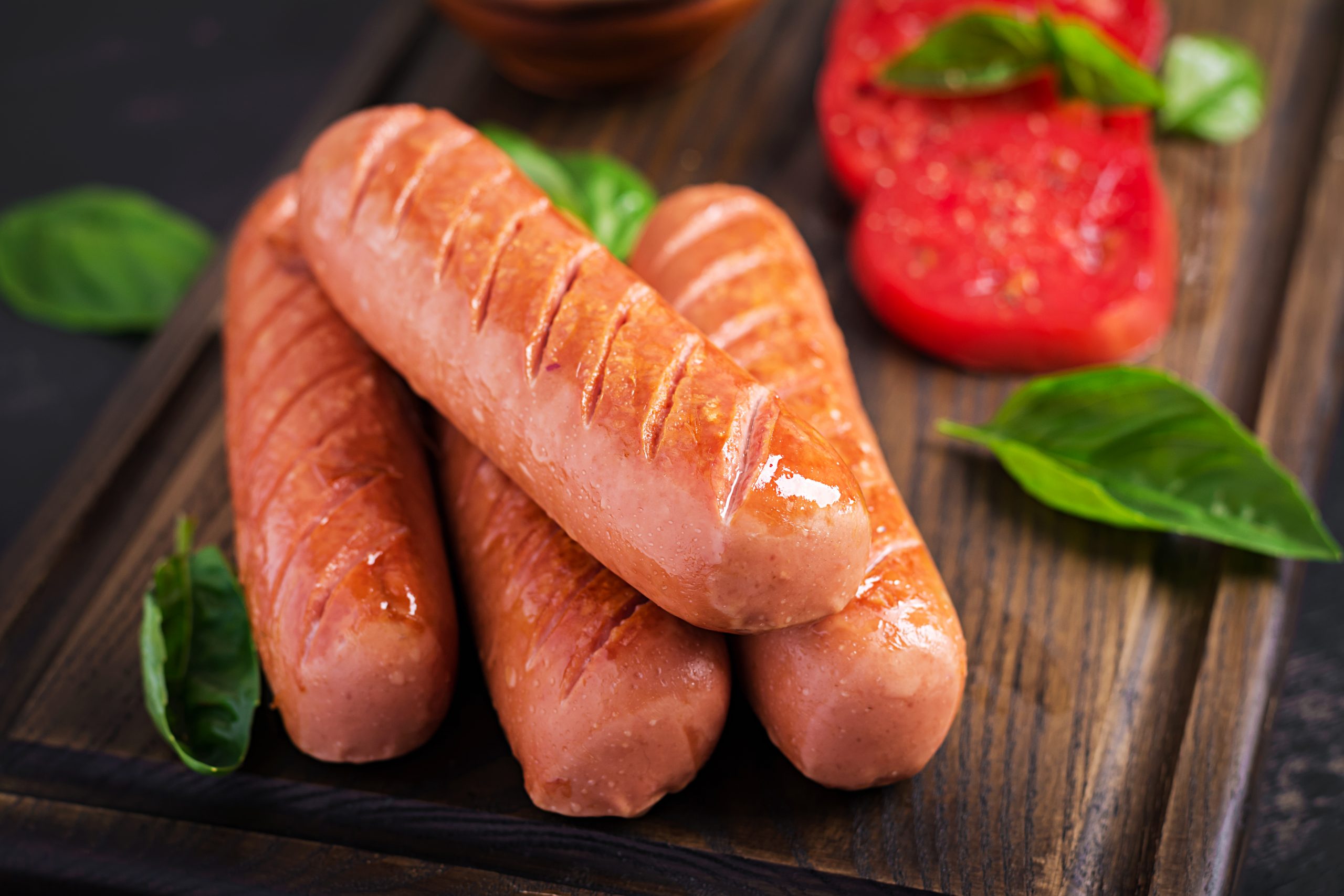Sausages can be made from any ground meat, including pork, beef, poultry, etc., and can be juicy and delicious. Hot dogs, sausage casserole, chorizo sausages, and other dishes are made with sausages. When you have nothing else to eat at home and need to create something quickly, leftover or frozen sausages are a terrific lifesaver.

How to Reheat Sausage?
Whether made of pig, beef, chicken, or even turkey, sausages are a huge hit at summer barbecues and other family favourites.
There’s no need to throw away extra sausages if you have too many! One of the following three methods will thaw them after storing them in the freezer or refrigerator:
Reheating Sausages in the Oven
The oven is the greatest place to reheat sausages. This guarantees they won’t dry out and will keep a lot of their delicious flavor and texture. The actions you must take to reheat sausages in the oven are listed below:
- Please turn on the oven and heat it to 325 degrees Fahrenheit, or 165 degrees Celsius.
- Set Sausages in a Line on a Baking Tray
Line the sausages on the baking sheet with greaseproof paper, ensuring they are not touching. - Wrap in tin foil
Add a sheet of tin foil and loosely wrap the sausages to prevent them from burning on one side. - Heat
The sausages should be heated for around twenty minutes in the centre of the oven. - Examine the temperature
Make sure your sausages are thoroughly heated by probing them with a meat thermometer. They must be 70C or 165F. - Enjoy and Serve
It’s time to serve and savor your sausages after they reach serving temperature!
Reheating Sausages in the Microwave
Sausages can be reheated in the microwave if you don’t have twenty minutes to spare. The microwave is a decent (and faster) substitute. However, they might not taste as nice as they would after being warmed in the oven.
Reheating Sausages in a Microwave is As Follows:
- Place in a Dish Safe for the Microwave
Place your sausages in a single layer on a microwave-safe dish, then wrap them in a paper towel. - For 60 seconds, heat
Your sausages should be heated for one minute on the medium setting. If they aren’t hot enough, take them out of the microwave and check their temperature before putting them back in. - Until it is piping hot.
Continue doing this until your sausages are sizzling hot. Before serving, they ought to be 70C or 165F. - Enjoy and Serve
Your sausages are prepared to serve and eat as soon as they are hot.
Reheating Sausages on the Stovetop
The cooktop is the third and last way to reheat sausages. This is perfect if you prefer juicy, luscious sausages because pan-frying them in oil brings out the flavor of the sausages to the fullest.
Reheating Sausages on the Stovetop is As Follows:
- Warm up a pan
Put a frying pan on medium heat and add some cooking oil. - Include sausages
Your sausages should be added to the pan after a minute. If the oil begins to spew, reduce the heat and let it sizzle in the oil. - Turn
After a few minutes, turn the sausages over to ensure that both sides are cooked equally. They should be cooked for around five minutes. - Examine the temperature
Make sure your sausages are thoroughly heated by probing them with a meat thermometer. They must be 70C or 165F. - Enjoy and Serve
Your sausages are ready to serve and eat once they reach the proper temperature.
Reheating Sausages in a Pan
Put a pan on the stovetop with the base covered in water and turn the heat to medium-low. Your sausages should be in the pan; the lid should be on top. Turning them frequently, heat them for about 5 minutes or until all the water has evaporated. The sausages can then be browned with some oil.
Alternatively, you can cut your sausages lengthways, slice them into disks, and then pan-fry them in oil over medium-high heat.
In a Pan, Reheat Sausages As Follows:
- Fill a frying pan with water to a layer.
- Set the heat on your stove to medium-low.
- Your sausages should be in the pan; the lid should be on top.
- Turn the sausages frequently until thoroughly heated as the water evaporates.
- Optional: After the water has completely evaporated, uncover the pan and add a few drops of oil.
- You can cook your sausages to brown them for a minute or two.
- Serve right away.
Alternately, cut your sausages into disks or slice them lengthwise.
- On medium-high heat, warm a tiny amount of oil in a pan.
- Move the sausages in the pan as you fry them until they are at the right temperature.
- Serve right away after it’s warm and crispy.
- In the first approach, the water creates steam, which aids in keeping your sausages moist and heated evenly.
But be careful not to overwater the pan.
My Review
When attempting this reheating procedure, I used the water method and was really happy with the outcome.
My sausages maintained their excellent taste and were moist.
I thought the skin could appear damp. However, this wasn’t the case.
The sausages will start to brown very soon once the water evaporates, so don’t leave them unattended as I did.
Reheating Sausages in an Air Fryer
Your air fryer should be set to 350°F (180°C). Add your sausages. Your fryer basket should be lined with foil for easier cleaning. n the air fryer basket, heat them for 4-5 minutes and check on them halfway through. You can serve them right away once they’re warm.
Reheating Sausages in an Air Fryer:
- Your air fryer should be set to 350°F (180°C).
- Put your sausages in the fryer basket so that they don’t touch.
- They should be heated for 4-5 minutes, with a 2-minute check on how they are doing. Regular progress checks are advised because the air fryer tends to quickly overcook food.
- Serve right away once it is thoroughly warmed.
How to Reheat Sausages Successfully?
These three suggestions can assist you if you wish to reheat sausages successfully:
Slice Sausages – A fantastic strategy to hasten the reheating process is to slice your sausages before you heat them. Additionally, if you are reheating them in a skillet, it will make sure that they are crisp and heated all the way through.
You should freeze and preserve your sausages if you won’t be reheating them within a few days. Sausages freeze remarkably well, so consider freezing them. Sausages that have been cooked can keep for a while in the freezer.
Use Sausages Differently – There are many various ways to use sausages. You might thinly slice them, include them in handmade pizzas, or chop them up and mix them with a hearty spaghetti sauce. In conclusion, there is no justification for throwing away leftover sausages.
The sausage’s skin will cook up considerably more quickly on the outside than the inside because of how the air fryer operates.
Because it’s so hot outside, it’s simple to assume that the sausages are cooked.
However, before removing the sausage from the air fryer, ensure it is heated.
Here, you have three choices:
- Employ a thermometer
- Feel inside the sausage after cutting it open.
- When you remove the sausage from the fork, feel how hot the teeth are.
My Review
The air fryer is the best way to reheat sausages. I wholeheartedly advocate using an air fryer if you have access to one.
While the interior remains moist and flavorful, the skin becomes a deliciously crisp texture.
This approach likewise takes little effort and is quick and convenient. Take care not to overcook the sausages since that will result in extremely dry sausages.
Reference: Effects of Heating Bacon and Sausage in Nonwoven, Melt-blown Material
How to Tell if Sausages are Bad to Eat?
Although sausages are a fantastic source of protein, frequent consumption is not recommended.
Knowing the age of your sausages will help you determine whether they are safe to consume.
If a butcher’s fresh sausages don’t contain an expiration date, the simplest method is to look for mildew or other symptoms of degradation.
- Your sausage is safe to eat if it smells like meat should smell and shows no signs of mould or deterioration.
- But discard that piece immediately if any obvious black spots are on the surface.
- It might imply that something went wrong during processing, which would also indicate the presence of potentially hazardous germs.
- Make sure to carefully check your meats before using them in recipes to verify freshness so you can completely prevent this.
- Finally, it’s better to discard your sausages if you’re still dubious about their safety.
What to do with Leftover Sausages?
Dinner can be transformed into something exceptional with the help of sausages.
They’re great for preparing meals that can be eaten on the go, and since they’re simple to store in your fridge or freezer, you can always have them on hand.
But what should you do with any sausage that is left over? Here are a few concepts:
- The leftovers can be grilled or roasted and then served on bread as an open-faced sandwich. Before turning it onto the toast of your choice, some classics include adding cheese, chilli sauce, mustard, barbecue sauce, or ketchup. If desired, you can also put the cooked sausage in a bowl and add gravy on top.
- To ensure that the sausages are hot when served, chop them into bite-sized pieces and add them to rice pilafs, pasta dishes, or stir-fry recipes before serving.
- Use the leftover sausages to enhance the flavour of a morning mea,l like eggs benedict or sausage and egg pie.
- For dinner today, combine leftovers with scrambled eggs, cheese, and vegetables to create an omelette.
- For a quick sandwich, place cooked sausages inside sourdough pita pockets and diced tomato, onion, and cucumber.
- Cooked sausages should be added to your favorite soup recipe and heated through.
Additionally, you may use leftover sausage as a topping for homemade pizza. Before adding the mozzarella cheese, parmesan cheese, and pepperoni slices, make sure you have some spaghetti sauce on hand.
Conclusion
This blog post is the ideal resource if you’re seeking an easy, delectable method to eat your favorite sausage any time of day. We hope this post has helped you learn how to reheat sausages so you can now prepare them whenever you want. Do you have any further queries about preparing or consuming these delectable treats? Ask away; we enjoy getting reader feedback.

